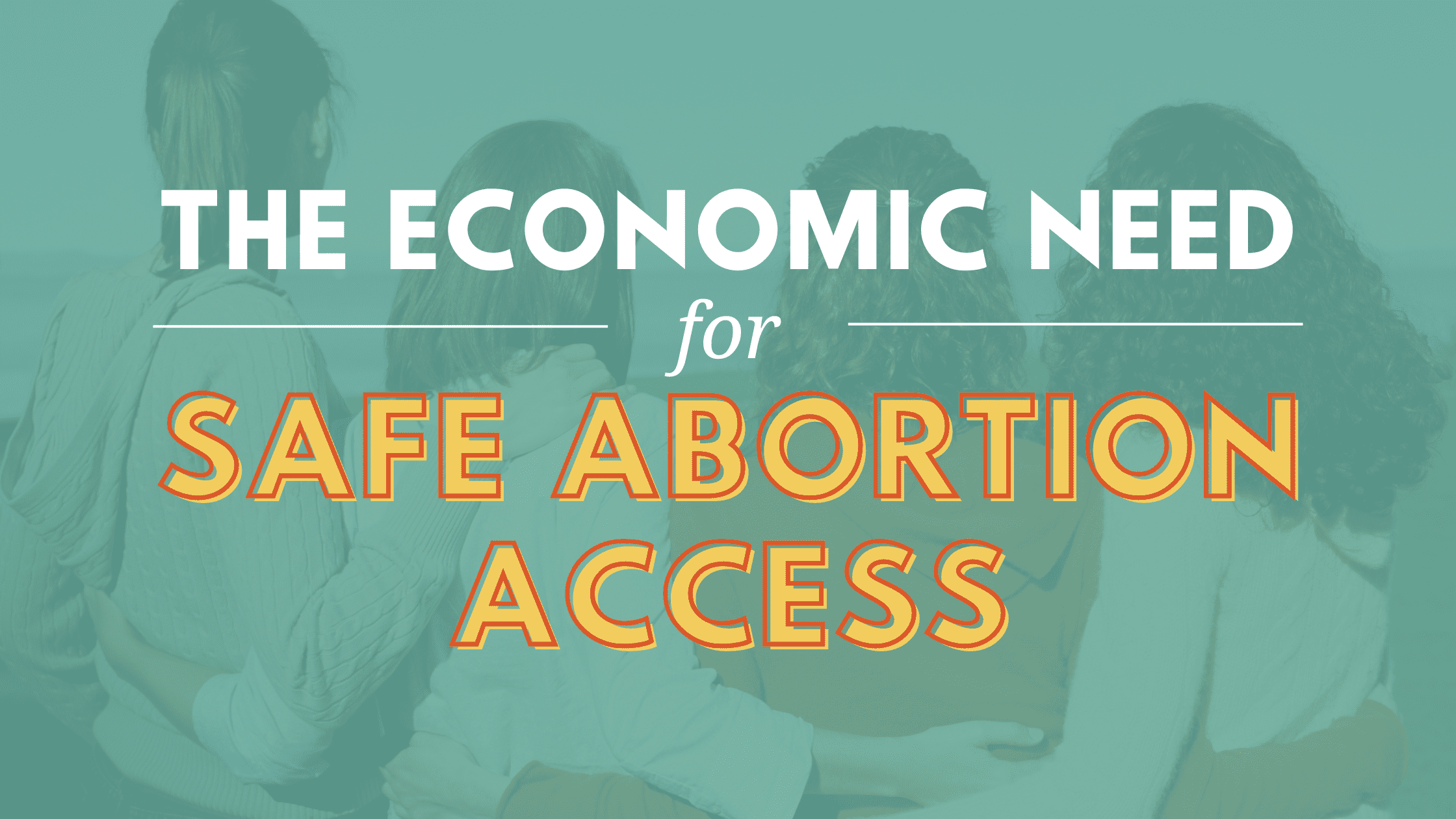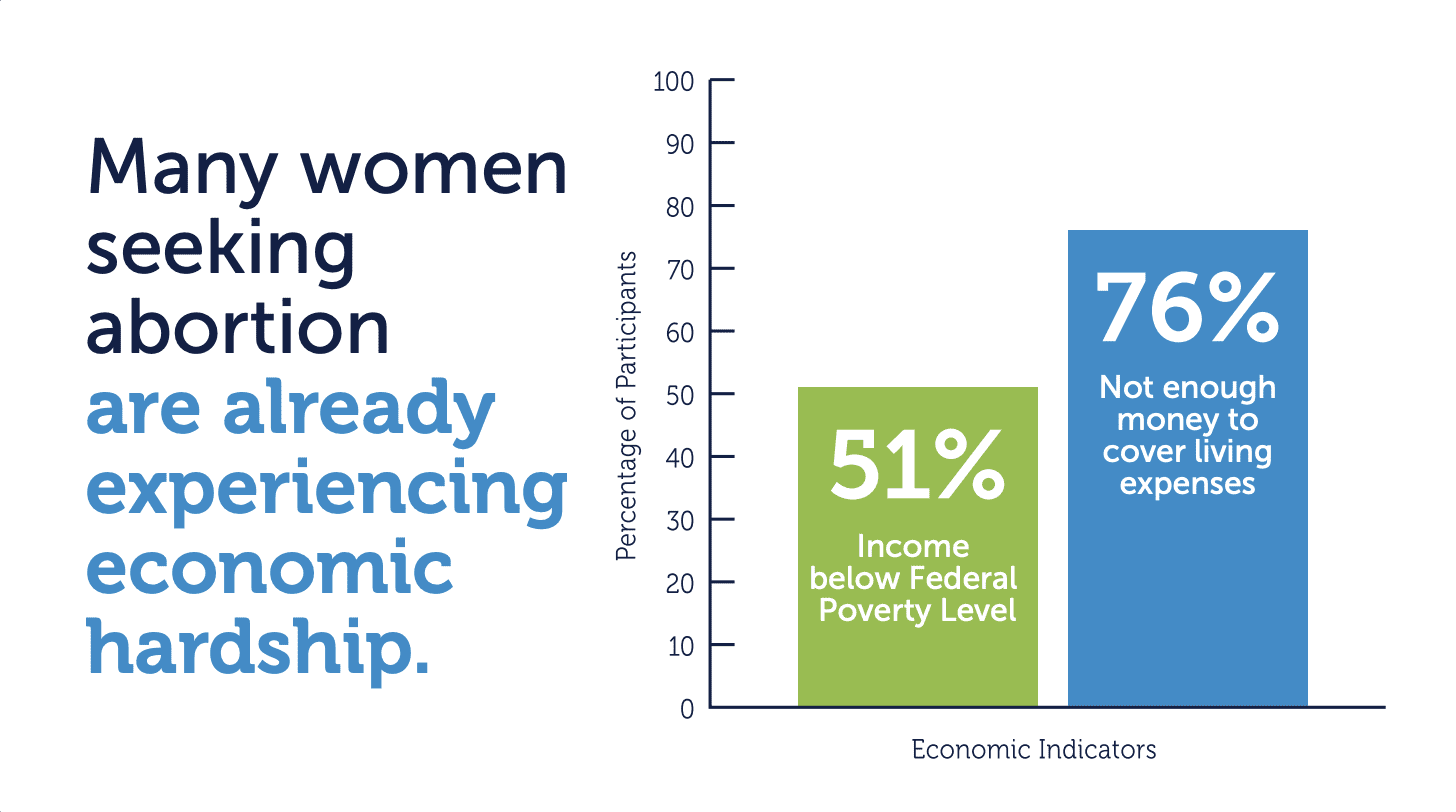Just days after the Supreme Court of the United States overturned Roe v. Wade, many states across the country worked to place strict limitations on abortion access for birthing people. Texas lawmakers had been anticipating the fall of the nearly 50-year precedent, and Texas thus became one of the states that instilled a “trigger law” to kick in after the overturning, which effectively banned abortions statewide. The trigger law went into effect on August 25. Despite the overwhelming evidence that shows abortion restrictions are detrimental to people who can give birth, especially those with low incomes and people of color, Texans now face a new reality that affects their personal and economic decision-making.
The Institute for Women’s Policy Research (IWPR) gave Texas a “C” rating and a national ranking of 26 based on its “Reproductive Rights Index.” The index ranks states based on a number of indicators fundamental to women’s well-being: employment and earnings, political participation, reproductive rights and health, economic security and opportunity, and work and family. This ranking for Texas is a clear indicator that the laws in place are harmful to women and birthing people in our state. The effects of such policies as well as prior limitations were already being felt in Texas, even before the ruling in the Dobbs v. Jackson Women’s Health Organization case. In the 87th Legislative Session, Senate Bill 8 left hundreds of thousands of Texans with few to no options for safe and accessible abortions, as abortion clinics and health care providers were forced to stop providing services out of fear of prosecution. Before the trigger law took effect, only 57% of women in Texas lived in a county with at least one abortion provider according to the Reproductive Rights Index.
One facet of this issue that demands the attention of Texas lawmakers is the economic impact of denying abortions. Study after study demonstrates that limiting access to abortion leads to worse economic outcomes for women, especially for women of color, and damages our overall economy by forcing a large number of women out of the labor force.
Texas-Sized Costs
According to the Texas Policy Evaluation Project, within the four months after the Texas abortion ban was implemented in 2021, over 5,500 Texans sought out-of-state abortions compared to about 500 during the same timeframe in 2019. In light of the 2021 laws, 52 companies — including Yelp, Lyft, Ben & Jerry’s, Lush Fresh Handmade Cosmetics, and Bumble — criticized Texas’ near-total ban on abortion, stating in an open letter that restrictions on reproductive care will be “bad for business” and hurt workers, customers, and the state’s economy.
Data show that the economic impacts of abortion bans are huge. The IWPR found that the economic loss of abortion restrictions to women and the state economy is $14.5 billion annually in Texas. Studies from the IWPR also show that eliminating abortion bans and restrictions would be beneficial not only to women and birthing people but also to the state economy overall. Eliminating all state-level abortion restrictions would result in over 82,000 women ages 15-44 entering the workforce.
In addition, state earnings would increase as a result of a larger labor force in the absence of abortion restrictions. Hispanic/Latina women would see the highest increase in state earnings — over $190 million annually. For all employed women ages 15-44, estimated earnings would increase by over $14 billion (in 2020 dollars) per year.
The economic impacts of abortion restrictions are substantiated by multiple studies and years of research. The outcomes observed by some of these studies, including reduced female labor force participation, directly impact the overall economic standing of individual states, and the country at large.
Costs Beyond Texas
When the labor force participation of a nation increases, measured national income per capita also increases. More simply, when we have more people working in our country, individual incomes increase as well. Having more workers leads to higher production rates, which leads to more money flowing through our economy. Adversely, when the labor force shrinks due to any reason, including abortion restrictions, it could impact the vitality of local and state economies and have many national and local implications.
In the landmark case Dobbs v. Jackson, which overturned the right to an abortion, Thomas E. Dobbs, the state health officer of the Mississippi Department of Health and the defendant in the case, argued that recent developments in paid family leave, contraception, and the presence of “safe haven” laws in all 50 states “facilitate the ability of women to pursue both career success and a rich family life.” Therefore, according to Dobbs, abortion no longer needs to be protected by the court. While these are necessary resources for people who can give birth, Dobbs’ argument does not take into account the strong socioeconomic data that paints a different and more stark picture.
The United States is one of only two countries without national paid maternity leave. While nearly every other country in the world offers more than a year of paid maternity leave, the United States provides only twelve weeks of unpaid leave under the Family and Medical Leave Act of 1993. Despite lackluster support from companies, the workplace protections that do exist for mothers apply mostly to people with college degrees; at the lower end of the economic spectrum, where hourly workers may be engaged in shift work with unpredictable hours, there are few safeguards in place.
Observational studies have also determined the effects of unwanted pregnancy on women’s lives. The Turnaway Study examined nearly 1,000 women seeking an abortion from 30 facilities around the country. Of those that participated, there were 383 “near-limit” women, or women who were in stages of their pregnancy that put them at risk of not being able to receive an abortion due to local abortion restrictions. Of those women, 180 were turned away from getting an abortion, and the study followed this “turnaway group” and found the haunting effects of not being able to plan their family. The Turnaway Study highlighted that not having enough money to care for a child is the most common reason for seeking an abortion. Over the subsequent five years, the average woman in the Turnaway Group faced a 78% increase in past-due debt and an 81% increase in public records related to bankruptcies, evictions, and court judgments. The study also found that after being denied an abortion, women were three times more likely to be unemployed than those who had obtained abortions, and four times more likely to be below the Federal Poverty Level compared to those who had obtained abortions.
The lifelong economic impacts and effects of not being able to obtain an abortion are clear and striking. However, the positive economic impacts of being able to obtain an abortion are compelling and hopeful. While women who have children face an immediate and persistent one-third drop in expected earnings, young women who were able to use legal abortion services and delay motherhood by one year saw an 11% increase in hourly wages later in their careers. On the other hand, fathers’ earnings remain largely unaffected as a result of a lack of family planning — a divergence known as the “motherhood penalty.” This is likely because access to abortions increases the probability that women experiencing unintended pregnancies are still able to attend college and enter professional occupations. In fact, one study found that for young women experiencing unintended pregnancies, access to abortion increased their probability of completing college by about 20% and their probability of entering a professional occupation by about 40%. Additionally, women who were able to delay motherhood through legal access to abortion were able to pursue higher degrees and spend more time in the labor force, and they were much less likely to fall into poverty later in life.
Another form of family planning, contraception, is vital to the overall economy as well. A report done by the Congressional Joint Economics Committee found that while over 47 million Americans aged 15-49 relied on contraceptives from 2017 through 2019, the economic impacts of unreliable access to contraceptives stretch far beyond these users. They found that every dollar spent on contraceptive services saves almost $6 of public spending through reducing unwanted pregnancies alone; this adds up to a public savings of $10.5 billion per year. Additionally, men also see educational benefits from contraception access — young men whose partners have legal access to oral contraception are more likely to complete college. Even further, children find benefits in investment in and protection of contraception access — children whose parents have access to contraception had higher levels of education and higher future earnings than those who did not.
Once again, these findings are not exclusive to women and people who attempt to obtain abortions — these numbers can and likely will have a spillover effect into the general economy. The International Monetary Fund supports the framework that closing gender gaps can contribute to higher economic growth, and that empowering women is smart economics. Additionally, countless studies and data have repeatedly shown that the positive outcomes and livelihoods of mothers have significant impacts on the outcomes of their children and the generations following, and thus, society as a whole. Therefore, the positive socioeconomic effects of being able to obtain an abortion are not just felt by the person receiving the abortion but are also shared with the children. Legalization in repeal states reduced the number of children who lived in single-parent households, experienced poverty, and received social services. Cases of child neglect and abuse also decreased. Studies have examined the downstream effects of children of the Roe era and found higher levels of college graduation and lower rates of single parenthood.
The Economy Needs Safe Access to Abortions
The evidence, data, and lived experiences of women and birthing people are all too clear — abortion bans are devastatingly harmful to the people seeking them, but also to the general economy on a macro and micro level. These effects are also felt disproportionately by Black people, Indigenous people, and people of color who are already facing disparities due to systemic racism and inequity. Abortion bans and restrictions are a loss not only for women but also for the general economy.

